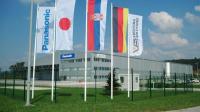Spotlight: Serbian free zones

Serbia’s 15 free zones are driving forward an ongoing flurry of foreign investment in the country’s buoyant manufacturing scene, especially in automotives.
Serbian free zones – also known as special economic zones (SEZs) – have doubled in number over the past decade. Now home to roughly 200 companies, the country’s zones exported $2.18bn of goods in 2018, according to the Serbian government’s Free Zones Administration (FZA).
Most free zones in Serbia are located close to pan-European Corridors 10 and 11, and within the boundaries of a town or city, the main source of labour for tenant companies. Free Zone Smederevo, Free Zone Uzice and Free Zone Priboj are good examples of this, and have successfully attracted an increasing number of foreign businesses.
Since its establishment in 2012, the zone in Smederevo has witnessed a 20-fold increase in employment and 39-fold rise in exports, according to FZA. It currently employs 2357 people, and is best known for its steel mill, now owned by China’s HBIS.
Finnish-Indian enterprise, PKC Group, entered Free Zone Smederevo in 2013. Its plant now employs 1512 workers, producing cables for the automotive industry. World-class names operate within Serbia’s automotive cables cluster, such as Germany’s Draexlmaier.
Germany’s Koepfer completed a brownfield investment in Free Zone Smederevo in 2019, establishing a plant for the laser production of metal gears. Meanwhile, Italy’s Carbotech has, for five years, been producing carbon brushes for the automotive industry in the zone.
Free Zone Priboj – home to eight manufacturing companies employing 500 people – also contributes to Serbia’s thriving automotive components industry, with FAP Corporation building truck cabins and drive axle housings. However, its largest tenant is Turkish-Swedish company Flex Academy, which produces flexible steel pipes and fittings, mostly for export to Sweden and Russia.
Free Zone Uzice houses 2000 workers, half of which work at Copper Mill Sevojno which exports 87% of its goods, mostly to Western Europe, according to FZA. Meanwhile, Slovenia-based Impol Seval employs 700 people at the zone, producing aluminium coils, sheets and plates.
All three of the aforementioned zones have ample space for brownfield and greenfield investments. Like all SEZs in Serbia, companies operating in Smederevo, Priboj and Uzice are exempt from customs duties, other import duties, VAT on the sale of goods and services within and between zones, and payment of VAT on energy consumption (electric energy, gas, fuel oil and coal).
Costs of this report were underwritten by the following sponsors: Ministry of Finance of Serbia, the Chamber of Commerce and Industry of Serbia, the Free Zones Administration of Serbia, Free Zone Subotica, Free Zone Svilajnac, Free Zone Uzice, Free Zone Priboj and Free Zone Smederevo. Reporting and editing were carried out independently by fDi Magazine.

Global greenfield investment trends
Crossborder investment monitor
|
|
fDi Markets is the only online database tracking crossborder greenfield investment covering all sectors and countries worldwide. It provides real-time monitoring of investment projects, capital investment and job creation with powerful tools to track and profile companies investing overseas.
Corporate location benchmarking tool
fDi Benchmark is the only online tool to benchmark the competitiveness of countries and cities in over 50 sectors. Its comprehensive location data series covers the main cost and quality competitiveness indicators for over 300 locations around the world.
Research report
fDi Intelligence provides customised reports and data research which deliver vital business intelligence to corporations, investment promotion agencies, economic development organisations, consulting firms and research institutions.
Find out more.




